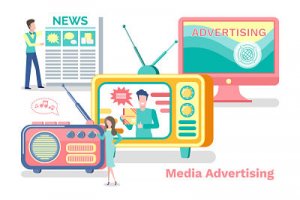Metrics that matter
October 16, 2019
 One of the most famous quotes about advertising is from a merchant named John Wanamaker and he said, “Half the money I spend on advertising is wasted; the trouble is I don’t know which half.”
One of the most famous quotes about advertising is from a merchant named John Wanamaker and he said, “Half the money I spend on advertising is wasted; the trouble is I don’t know which half.”
Back when I started in the business much of the work we did was difficult to measure all the way through the sales cycle. For example, if we bought a TV spot during a Cheers episode, we could count on certain demographics and the size of the audience but that was about as detailed as we could get. We often tried to link exposure to the message to a behavior but unless they were redeeming a specific offer or calling a campaign-specific phone number, we could only hypothesize that a surge in sales, inquiries or some other behavior was tied to the marketing efforts.
Today, we have the opposite problem. The volume of things we can accurately measure is staggering, especially if you are communicating digitally. It’s easy to get paralyzed by the data because you can’t possibly sift through it all before making a decision.
One of the phrases I’m sure MMG clients get sick of is “Just because we can measure it, doesn’t mean it matters.”
I thought it might be useful to identify some digital metrics that are actually worth watching and using as a bellwether for decision-making. We’ve previously discussed the importance of owning your own digital hub. For most organizations, that’s your website. I’m going to assume you’ve built your marketing strategy in a hub and spoke model, with your web site being one of your core hubs.
Given that assumption, let’s talk about metrics that matter for most organizations. You may find that one or more of these aren’t relevant to your business so don’t assume you should track all of them. But for most of us, these are pretty spot on.
Let’s look at metrics focusing on two factors – are you bringing the right people to your site and once they arrive, what do they do there?
Prospect attraction: Are you capturing the attention of the people you’d like to talk to about your products and services? Are you holding their attention long enough to get on their radar screen?
To measure your effectiveness in this area, you might look at:
Bounce rate: Bounce rate is the statistic that measures how many of your unique web visitors go to your home page and then immediately leave the site, rather than digging into the site to learn more. Your goal should be 30% or less.
What do people do on your site: Odds are you have a lot of pages on your website. Do you know which ones get visited most often? Or which ones capture the attention of your visitor for the longest period of time? Do you understand the traffic patterns (people go from what page or link to what page or link) that show up again and again?
To get that kind of insight, you might look at:
Page depth: Page depth is a stat that shows you the average number of pages your visitors view during a single visit.
Top viewed pages: As it suggests, it lists the individual pages of your website in the order of visit frequency.
In-page analytics: For your top viewed pages look at this report and analyze the click patterns. It will help you understand navigational patterns and issues on your website. You’ll also get some insights into your visitors’ intent.
Marketing is all the better because we use data to be more helpful to the people we want to serve. But to do that well, be careful that you’re looking at the right data and not drowning in meaningless numbers.
More







